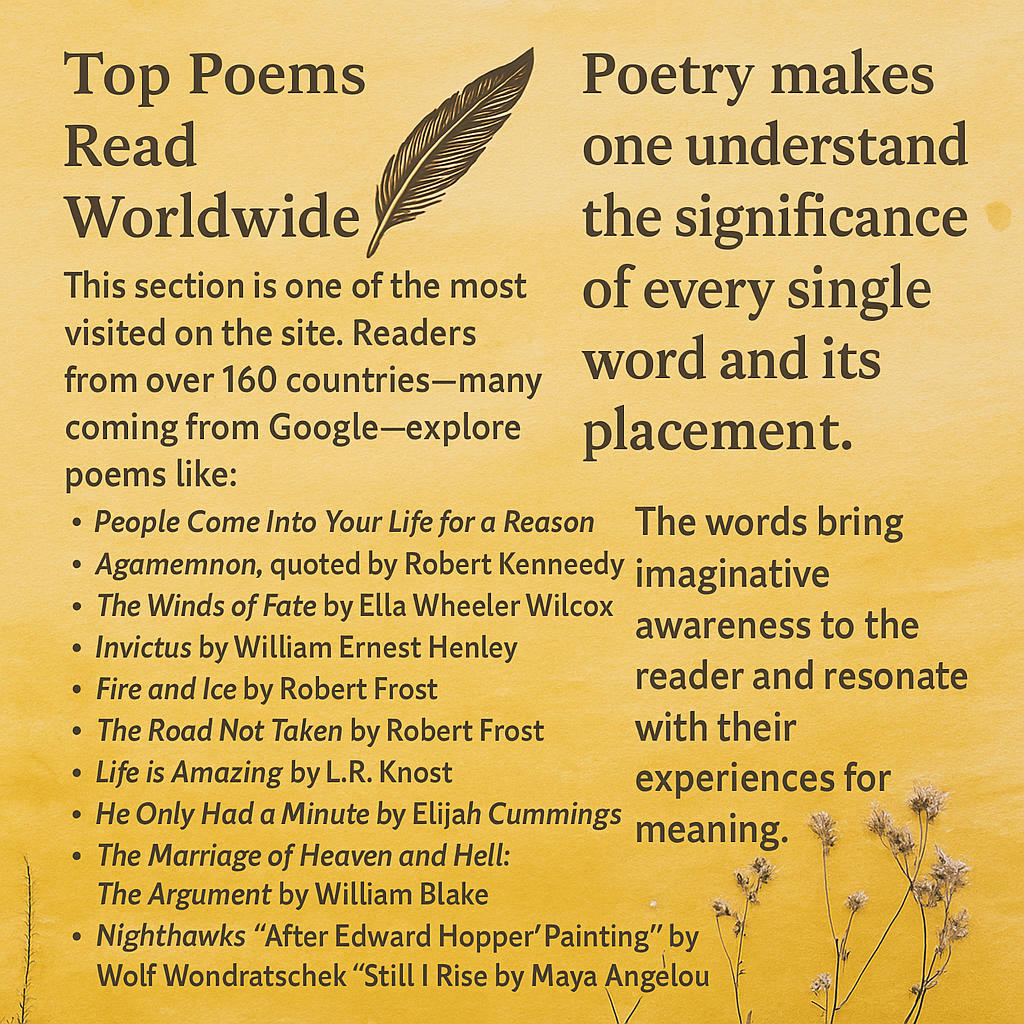Poetry Can Inspire and Shape Feelings and Emotions That can Lead to Nonfiction
Poetry shows the Poet’s feelings and emotions, and in that sense, it is nonfiction. The reader may connect with the implied feelings and emotions as well as the message in the words. That connection can lead to expression by the reader that could be either nonfiction or fiction.
These poems describe the purpose of life and how one should handle the sorrow and struggles along the way. The poem begins with the speaker contradicting a listener who wants to explain life to him as a matter of numbers and figures. It reminds me of:
"The Winds of Fate” by Ella Wheeler Wilcox.
One ship drives east and another west,
With the self-same winds that blow.
’Tis the set of the sail, and not the gale,
Which tells us the way to go.
Both poems tell us, “Life is real! Life is earnest!” it is up to us how we let the winds of life influence and direct us. Both poems inspired me as I wrote the book, “Work Matters: Insights and Strategies for Job Seekers in this Rapidly Changing Economy.”
A Psalm of Life
Henry Wadsworth Longfellow - 1807-1882





